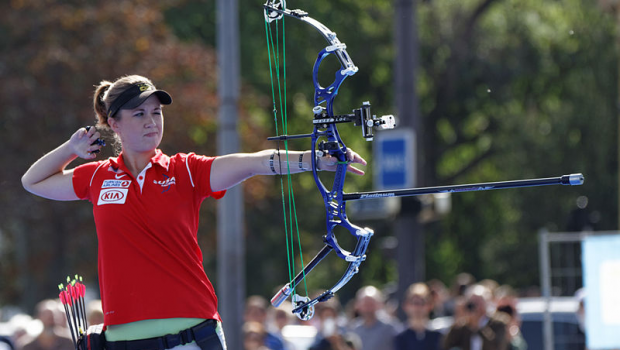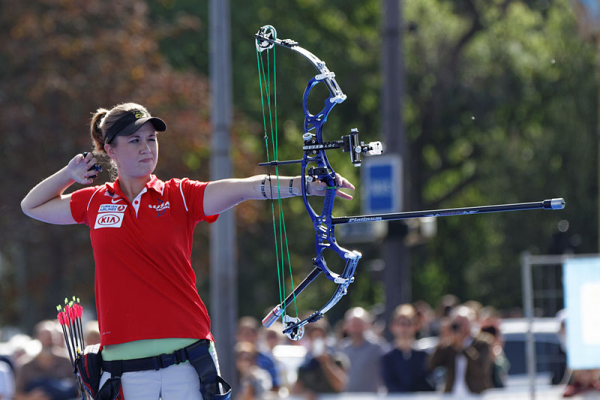Archery Goes Hi-Tech
As much as the nerd community flocks to superhero movies or devours sci-fi books, we can’t deny the appeal of the classic archer, stealthy and focused on their prey ahead. Unfortunately, archery used to be only for LARPers or hunters, but now the situation has changed. With the advent of more popular archer heroes, particularly Katniss from “The Hunger Games”, more high schools are adopting archery, and interest has risen especially among girls.
However, the bows that we typically see these fictional characters using are almost always primitive compared to the bows of today. Think less Katniss and more Hawkeye. If you want to approach superhero levels of archery prowess, you’ll have to practice, but the tech out there will certainly make it easier.
The Bow
There are two different types of bows: compound bows, which are able to store energy in a system of pulleys and cams, and recurve bows, which are the classic bows that you think of in fantasy novels/dystopian movies. The compound bow was invented the 1960s, and it was a pretty big deal at the time. However, we’ve come a long way since then.
Bow speed has only gotten better in the past 15 years. With current compound bows claiming a speed of 370 fps (meaning that your arrow is traveling at 252 miles per hour upon release), some assert that there’s not much more room for improvement. 370 fps is under perfect conditions. Blake Shelby, vice president of sales and marketing at PSE, claims, “We’re hitting a wall. Without another big technological breakthrough, we can’t make bows much faster without compromising how comfortable they are to shoot.”
Recurve bows are slower, but not less technologically advanced. Although they’ve been around for a long time, the modern age has made more than a few changes. Olympic-quality recurve bows use fiberglass-carbon fiber composite for the limbs of the bow (the pointy ends); the center part, where you grip, is composed of aluminum in a honeycomb structure. These materials allow the bow to be incredibly strong and light. However, if a bow is too light, then it won’t be stable; we’ve reached the Goldilocks weight already. So if bows are already as fast as we can get them with current technology, where are we supposed to turn next?
The Arrow
Of course, the next logical step is the arrow. Just like with the bow, there is an an optimal weight. The lighter an arrow is, the faster it will reach its target, while a heavier arrow will penetrate its target better. There are recommended weights, depending on the strength of the bow, and it’s generally a good idea not to go below them. If an arrow is too light, it runs the risk of damaging your bow long term.
However, heavier arrows run the risk of dropping before hitting their target. Think about throwing a bowling ball versus a tennis ball. While the bowling ball would certainly hurt worse, you could throw the tennis ball a lot farther. The same applies with arrows. By this point, we have found that optimum weight for arrows, so it’s best to take advantage of that expertise. It’s also important to use the same arrow every time, so as not to throw off your technique. In archery, even the smallest adjustments matter.
Attachments
Since it’s both critical and impossible to do everything exactly the same every shot, technology has thankfully stepped in to improve the game. Some of the biggest archery attachments are stabilizers, a long rod that extends from the front of the bow, reducing vibrations and resisting torque through release. An arrow can be thrown off by any movement in the fraction of a second after release, and using a stabilizer can greatly assist in steadying the bow to an inhuman level.
Pierre-Yves Beaudouin / Wikimedia Commons, via Wikimedia Commons
The sight and scope are the next level of archery attachments, making aiming even more of a precision game than it was. They often have adjustable axises, millimeter sensitivity, and even lasers, all confirming that you will hit your target before you release. Sometimes they can cause confusion as to whether it’s your form or your sight that needs to be adjusted, but once you are a competent shooter, this sort of device is indispensable.
Ultimately, archery technology has come a long way, even though it’s been around for a very long time. It’s sudden popularity is probably due to the emergence of archers in pop culture, and it’s a good thing not only for the archery industry, but for everyone. Archery, whether done competitively or for hunting, is a healthy sport for kids and teaches valuable skills. Even with higher technological integration, it is still an excellent activity to encourage at all ages. This will not change even after continue technological advancement, which is sure to come, although we seem perilously close to the peak of physical possibility.
















